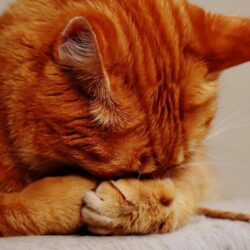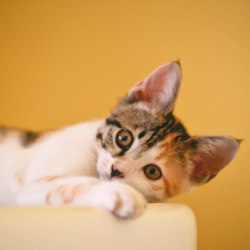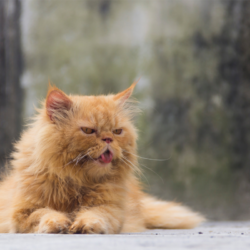Epilepsy in cats, although less common than in dogs, represents a major challenge for owners and vets. This neurological disease is characterised by sudden and often impressive seizures, involving muscle stiffness, convulsions and unusual behaviour.
How do you manage a seizure?
Even if seeing your cat convulse is upsetting, it’s crucial to remain calm. Intervening could put you in danger, as cats lose control of themselves during a seizure.
The best way to help your cat is to document the seizure, ideally by video. This information will enable the vet to better diagnose the condition. Various conditions can cause seizures: intracranial abnormalities (tumour, head trauma, encephalitis, vascular accident, congenital malformation), metabolic abnormalities (intoxication, hypoglycaemia, liver failure) or idiopathic epilepsy.
In the event of a seizure, it is essential not to intervene. Your cat may not recognise you and may bite you. During and after the seizure, leave your cat in a quiet place, without sound or visual stimuli, to limit the duration and prevent further seizures.
A convulsive seizure generally lasts a few seconds. If it is prolonged or if several seizures occur, contact your vet urgently to administer intravenous anticonvulsants. A neurological assessment and blood test, accompanied by imaging (MRI or CT scan), are often necessary to identify the cause.
Seizures can be prevented with appropriate treatment. Be vigilant for the warning signs of a seizure and avoid the factors that can lead to one (stress, fatigue, over-stimulation). However, preventing an imminent seizure is virtually impossible because the trigger in the brain is invisible.
What treatments are available?
As a general rule, there is no cure for epilepsy. Regular check-ups and constant communication between vet and owner are essential to manage the condition. Treatment aims to reduce the frequency of epileptic seizures.
The type of treatment depends on the form of the disease. For primary epilepsy, lifelong medication such as phenobarbital is often required. In the case of secondary epilepsy, the underlying cause needs to be treated, for example antibiotics for bacterial infections or surgery for tumours. Treatment is recommended if seizures occur more than once every 6 to 8 weeks. The same applies if the attacks are grouped or prolonged. The aim of the treatment, which is generally lifelong, is to reduce or eliminate the attacks.
Side effects of treatment may include increased appetite, thirst and weight gain. However, they are generally well tolerated. Cats undergoing treatment should consult a vet at least once a year. In the case of epilepsy of unknown origin, anticonvulsant treatment is started. For lesional epilepsy, it is crucial to treat the underlying cause.
Before initiating treatment, the animal’s clinical condition, the owners’ lifestyle, motivation, financial resources and the cat’s comfort level must be assessed. Treatment is necessary if more than one seizure occurs per month, if grouped seizures or status epilepticus occur, or if the seizures are particularly severe with a long post-ictal phase. Early treatment increases the chances of success.
Natural alternatives
There is a ketogenic diet which has proved effective in controlling refractory epilepsy in children. This diet is very high in fat and low in protein and carbohydrates. However, no studies have yet been carried out in cats.
There are a number of natural remedies that can be used to calm cerebral hyperactivity and help cats suffering from epileptic seizures.
- Fig tree: Young fig tree shoot macerate is a powerful emotional regulator. It acts on nervous disorders and stress.
- Holly: Fresh young shoots of holly macerate helps restore spasmodic nervous disorders. It also acts as a hypotensive and febrifuge.
- Juniper: Juniper bud macerate drains the nervous system. It is recommended for anxiety neurosis. It promotes restful sleep.
Skullcap and valerian are recognised for treating epileptic seizures, often in conjunction with anti-spasmodic treatments. Their use generally makes it possible to reduce the dose of medication while controlling the seizures, thereby reducing the side-effects.
Dietary supplements containing omega-3 and antioxidants can also improve the management of epileptic animals. It is crucial to maintain a stable diet and to manage the animal’s stress with anti-stress products to prevent further seizures.
Phytotherapy offers options such as valerian, known for its sedative and relaxing effects, and passionflower, with its antispasmodic and anxiolytic properties. Cannabidiol (CBD), which has no side effects, is also known to calm epileptic seizures and improve the animal’s general condition by reducing stress and anxiety.





